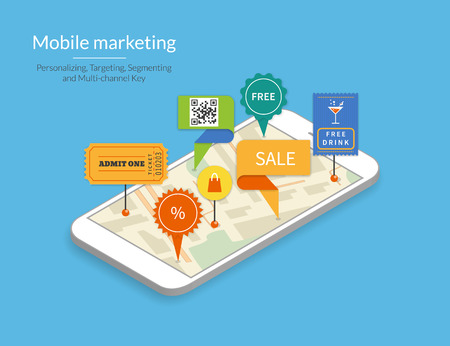Tips for effective in-app ad serving

Mobile publishers develop apps and publish them onto app stores like Apple App Store or Google Play Store for people to download and install into their devices. These publishers often rely on advertising in their apps as one of the main monetization strategies. This strategy is often called "freemium" as the app is free to use and contain ads. There is an option to upgrade to a premium version without advertising. Advertisers and ad agencies like in-app
ad serving because it is very targeted. For example, ads for tours and hotels work great within a travel app. Here are five in-app ad serving best practices to consider:
Quality ad creative
You only have a few seconds to get their attention so make it counts. Do not load the ads with too much info and details. Keep it simple but attractive. Combine clear text with high quality images. Have a clear call-to-action so they can click to explore more. Avoid re-using the same images for different campaigns. Use it as a new opportunity to connect with your audience. It pays to be creative.
Highly specific ad targeting
Because each mobile device is personal, the apps installed and used are also personal. There are many apps available on all different categories and subject matters but the user only selects a few to install onto the devices. That observation means in-app
ad targeting is a highly effective contextual targeting strategy. Apps that people use frequently are premium ad placements and those include social media, news, and gaming apps.
Ad serving in those sticky apps will have better reach and engagement when combining with additional filters and targeting options that are specific to the individual app.
Careful app selection
Select and monitor which apps your ads show up on because the app itself is a leading indicator of the audience. For example, you do not want to display business service ads inside a children gaming app because young children are unlikely to be interested in those advertisements and that is simply a waste of ad impressions and expense. It is a good idea to set both inclusion/targeting and restricted/exclusion app categories.
Continuously monitoring
In order to have an effective ad, you need to measure ad performance and then make adjustments to improve those metrics. Ad optimization is not a one-time task. It is done frequently for each campaign. Some are automated and some require manual evaluation. Some
ad servers have features to setup multiple ad variants and perform A/B testing so the better versions are shown more than the rest. Ad copy might need to adjust manually if it was unclear originally.
Related
- Ad serving tips for a more effective in-app advertising experience
"In the digitized age, mobile apps have gained significant popularity across the world. Through these applications, people can enjoy entertainment, educational, healthcare and other services at their fingertips. " More
- Benefits of in-app ad serving
"With the boom in mobile usage, app developers know that they have many ways to monetize this traffic. One of the ways is displaying in-app advertising and getting paid from ad revenue. " More
- Five popular ad formats for mobile games
"Mobile game ads are advertisements that display inside games when people play those apps on their mobile phones and tablets. Gaming apps have one of the highest installs and engagements in app stores. " More
 Mobile publishers develop apps and publish them onto app stores like Apple App Store or Google Play Store for people to download and install into their devices. These publishers often rely on advertising in their apps as one of the main monetization strategies. This strategy is often called "freemium" as the app is free to use and contain ads. There is an option to upgrade to a premium version without advertising. Advertisers and ad agencies like in-app ad serving because it is very targeted. For example, ads for tours and hotels work great within a travel app. Here are five in-app ad serving best practices to consider:
Mobile publishers develop apps and publish them onto app stores like Apple App Store or Google Play Store for people to download and install into their devices. These publishers often rely on advertising in their apps as one of the main monetization strategies. This strategy is often called "freemium" as the app is free to use and contain ads. There is an option to upgrade to a premium version without advertising. Advertisers and ad agencies like in-app ad serving because it is very targeted. For example, ads for tours and hotels work great within a travel app. Here are five in-app ad serving best practices to consider: